11 HARO Alternatives for Link Building in 2024
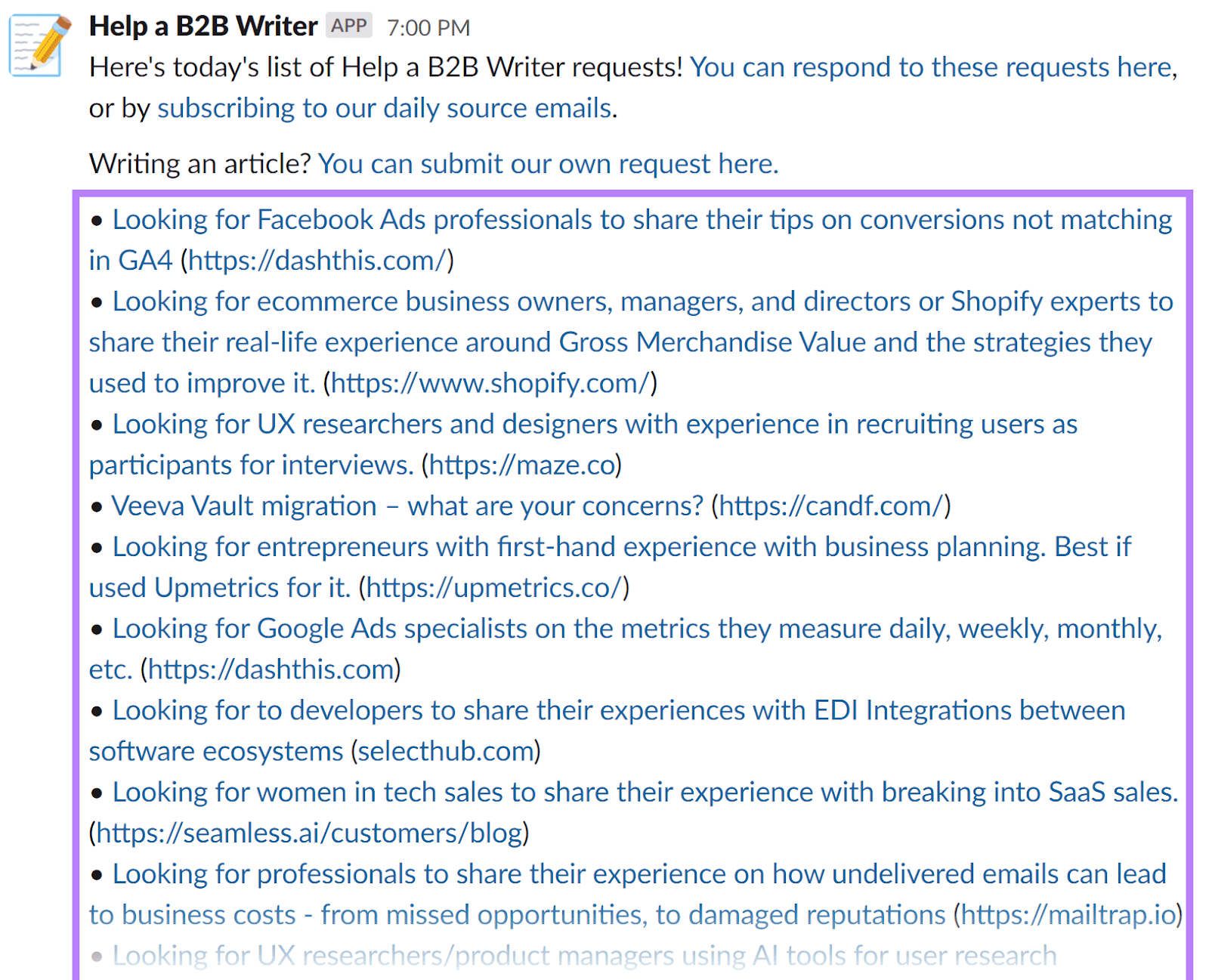
For years, marketers and businesses have used Help a Reporter Out (HARO)—which has since become Connectively—to provide expert insights for writers’ articles and build backlinks to their websites.
But it’s not the only option.
In this guide, we’ve put together a list of 11 Help a Reporter Out alternatives you can use for link building.
Let’s get started.
Direct HARO Alternatives
Here are a few alternatives to HARO (Connectively) that can help you gain backlinks:
1. Help a B2B Writer
Help a B2B Writer connects B2B writers with industry experts and sources for their content.
The platform is run by Superpath, a Slack community for content marketers. And is free to use.
When you register yourself as a source, you can select your area of expertise. Based on your selection, you’ll receive relevant requests.
Requests submitted by B2B writers and journalists appear in Superpath’s #content-collab channel, so you can find opportunities there.

You’ll also receive emails asking you for insights on topics you have expertise in.
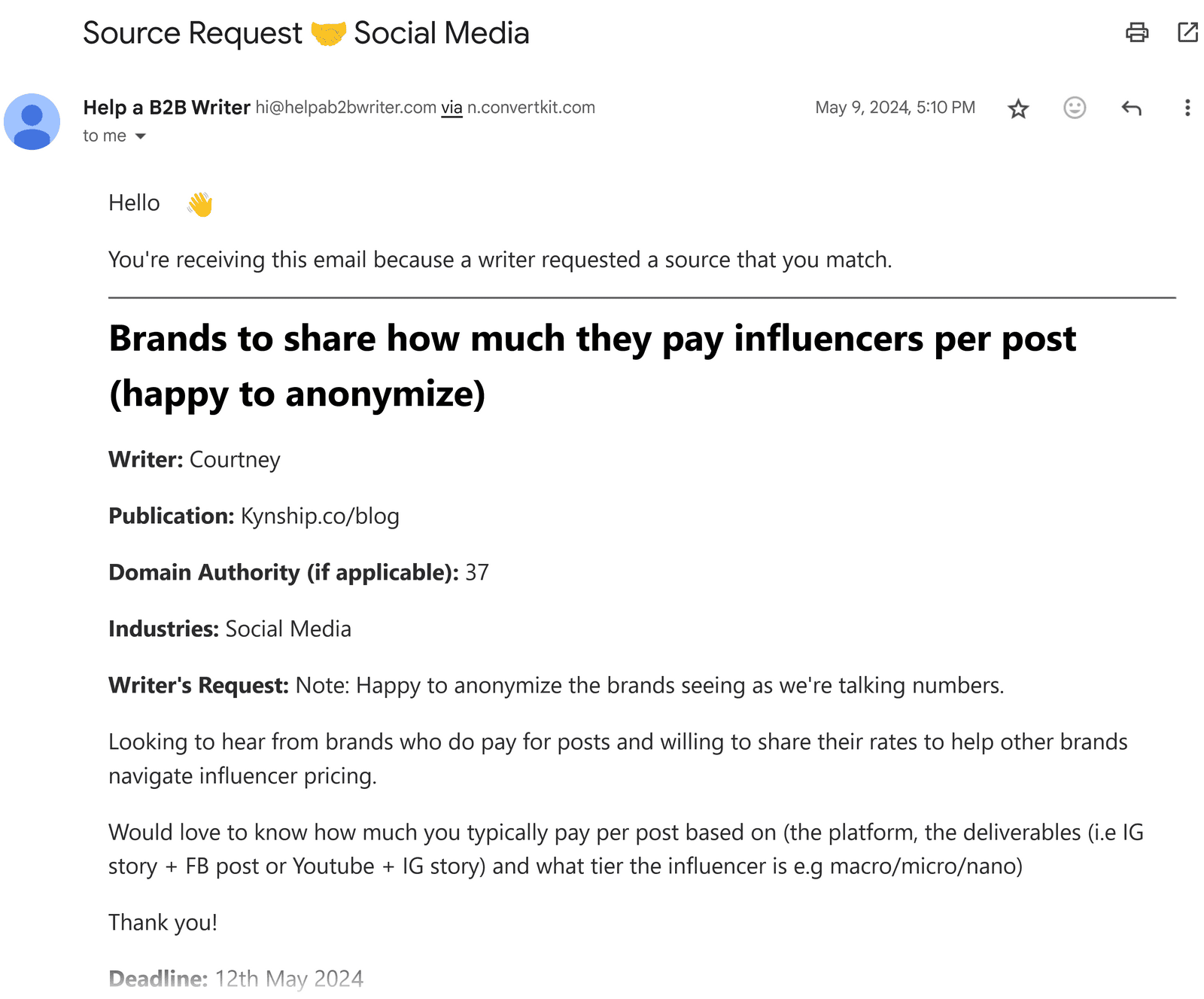
From there, you can directly reach out to the person who submitted the request. And either ask for additional context or simply submit the information they requested.
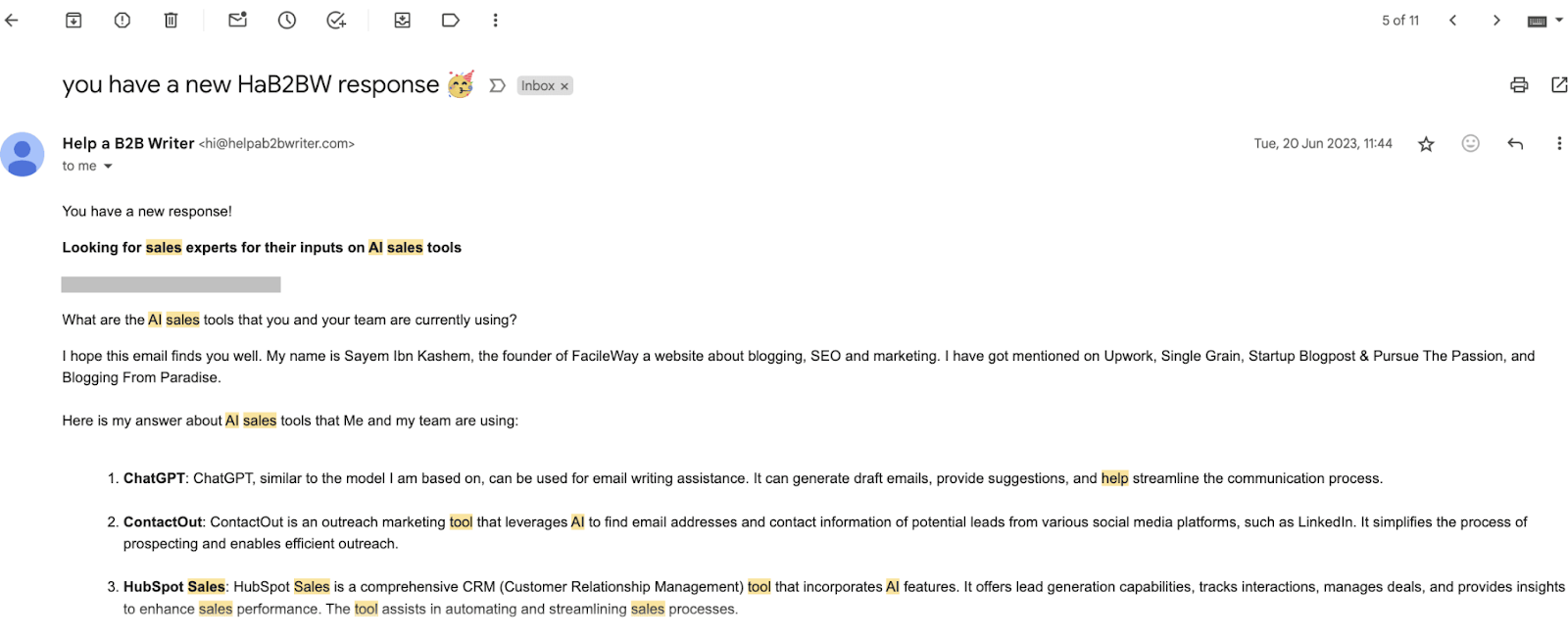
2. Qwoted
Qwoted offers three account types:
- Self-representing experts and businesses: To submit your expertise and get yourself or your business featured in media publications
- PR and marketing professionals: Communications professionals who want to promote their clients’ or companies’ thought leaders
- Journalists and media creators: Writers, reporters, and event organizers who are looking for expert contributions
You need a company email to sign up for an expert account. Then, you can display your credentials and highlight your expertise and experience.
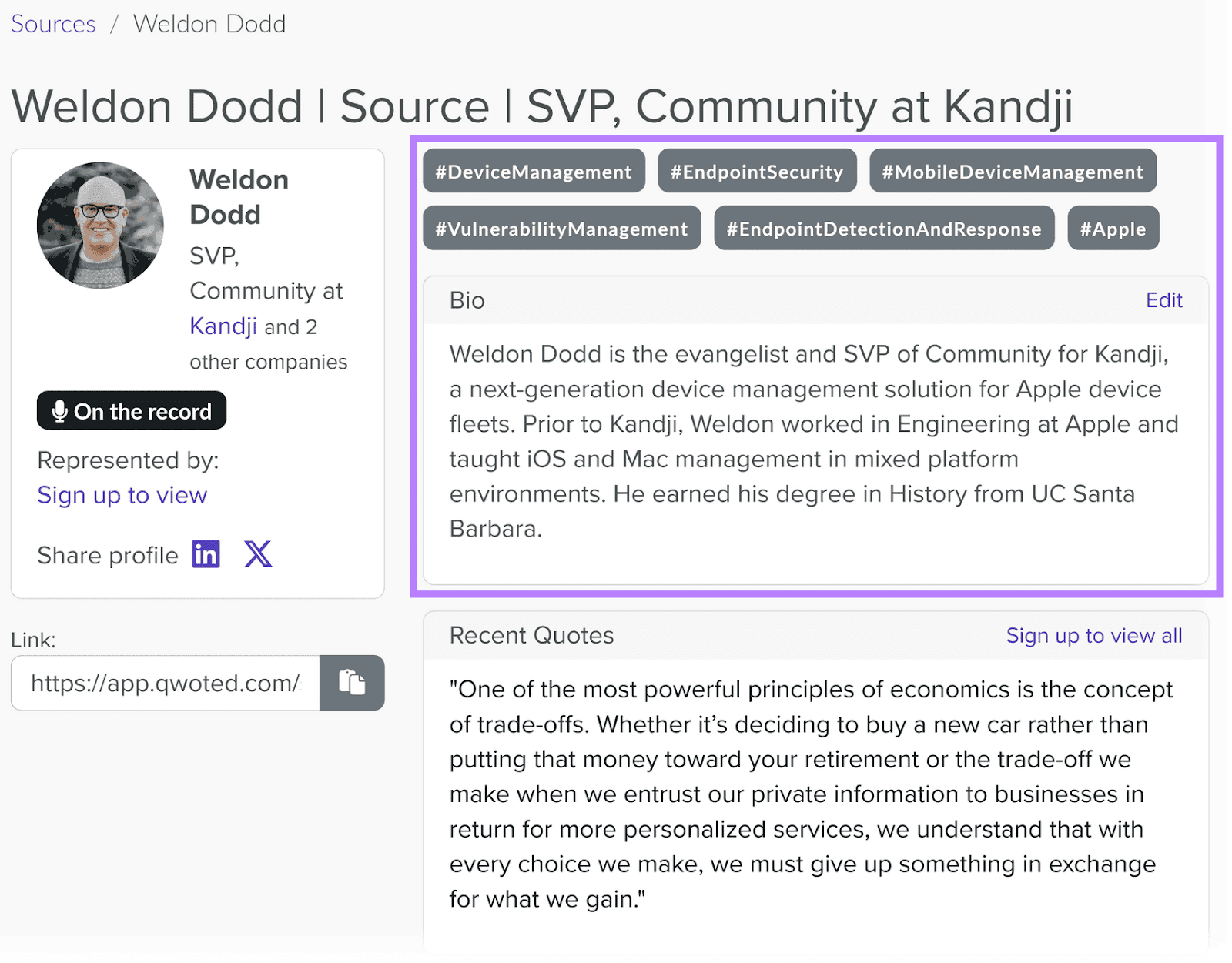
Your profile will also be included in Qwoted’s expert database.
Journalists and media creators can browse the database to find experts like you for their stories.
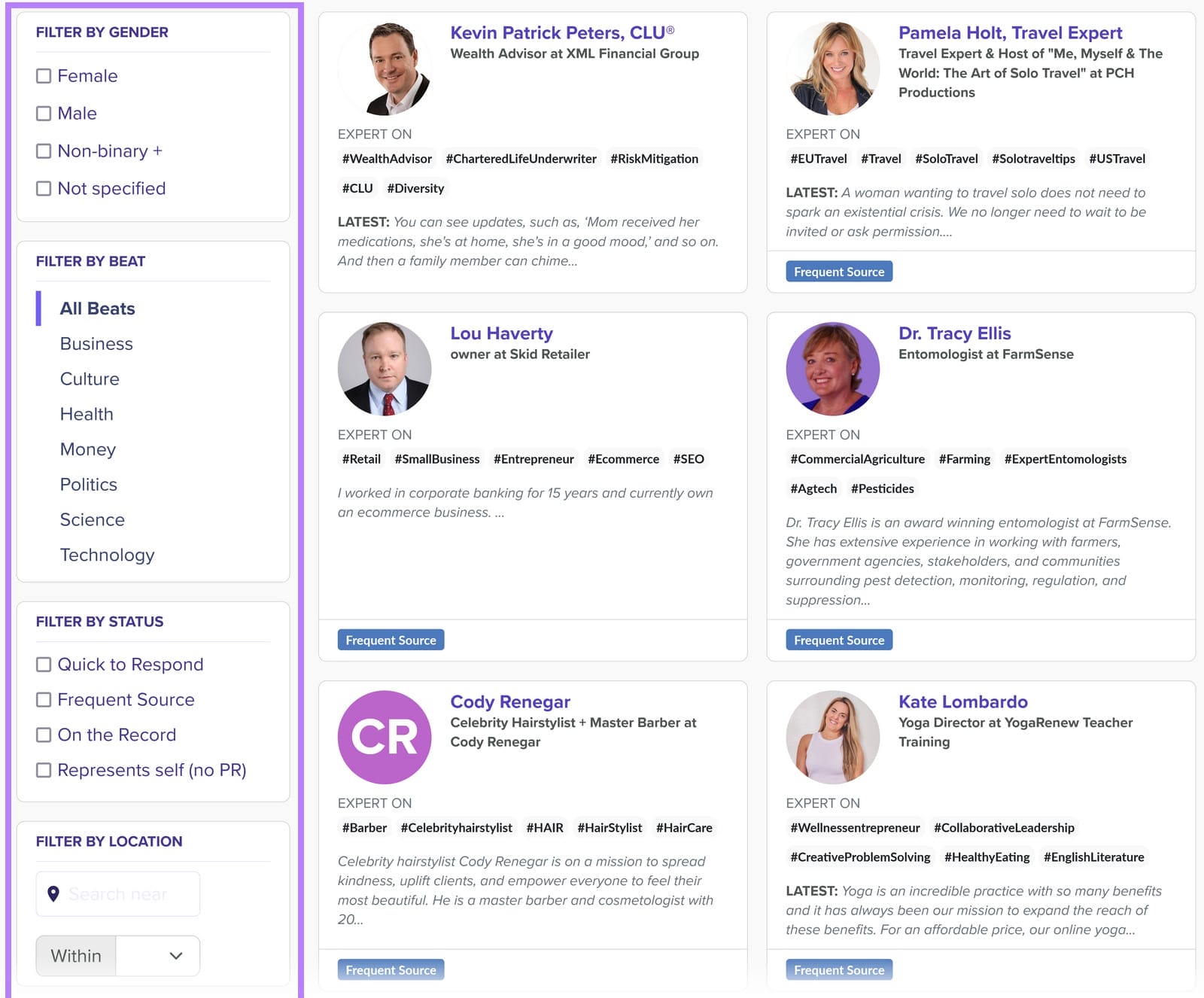
And then reach out to you directly.
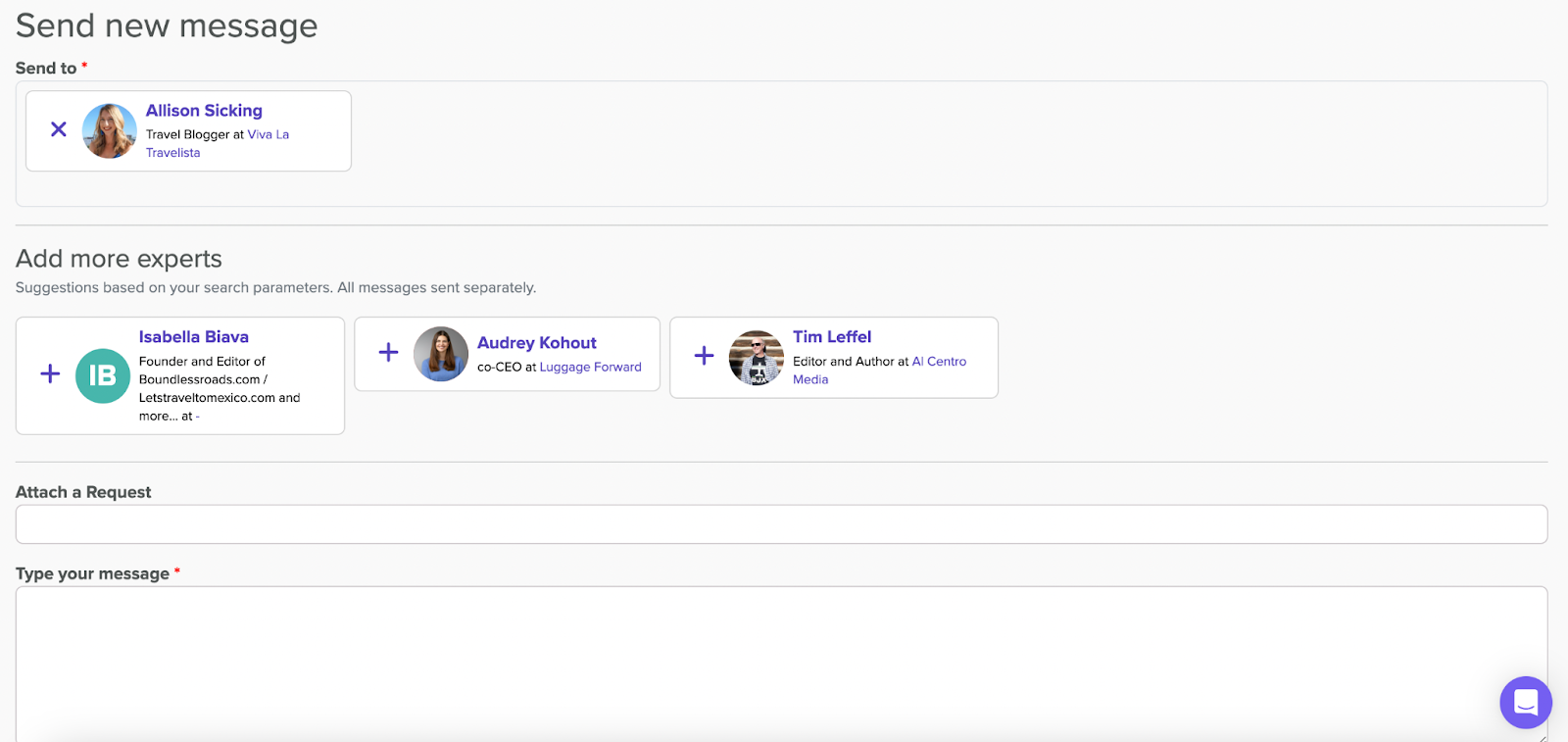
Or, you can browse requests on Qwoted and submit up to two pitches per month for free.
If you want to submit more, you’ll need to subscribe to one of their paid plans.
Qwoted will also send you emails with media requests that match your profile and areas of expertise.
3. Featured
Journalists from companies like Fast Company, GoDaddy, and Zapier use Featured (formerly Terkel) to get quotes for their content.
Featured is free for publishers—who can submit as many requests as they like. And can either request specific quotes or publish-ready articles.
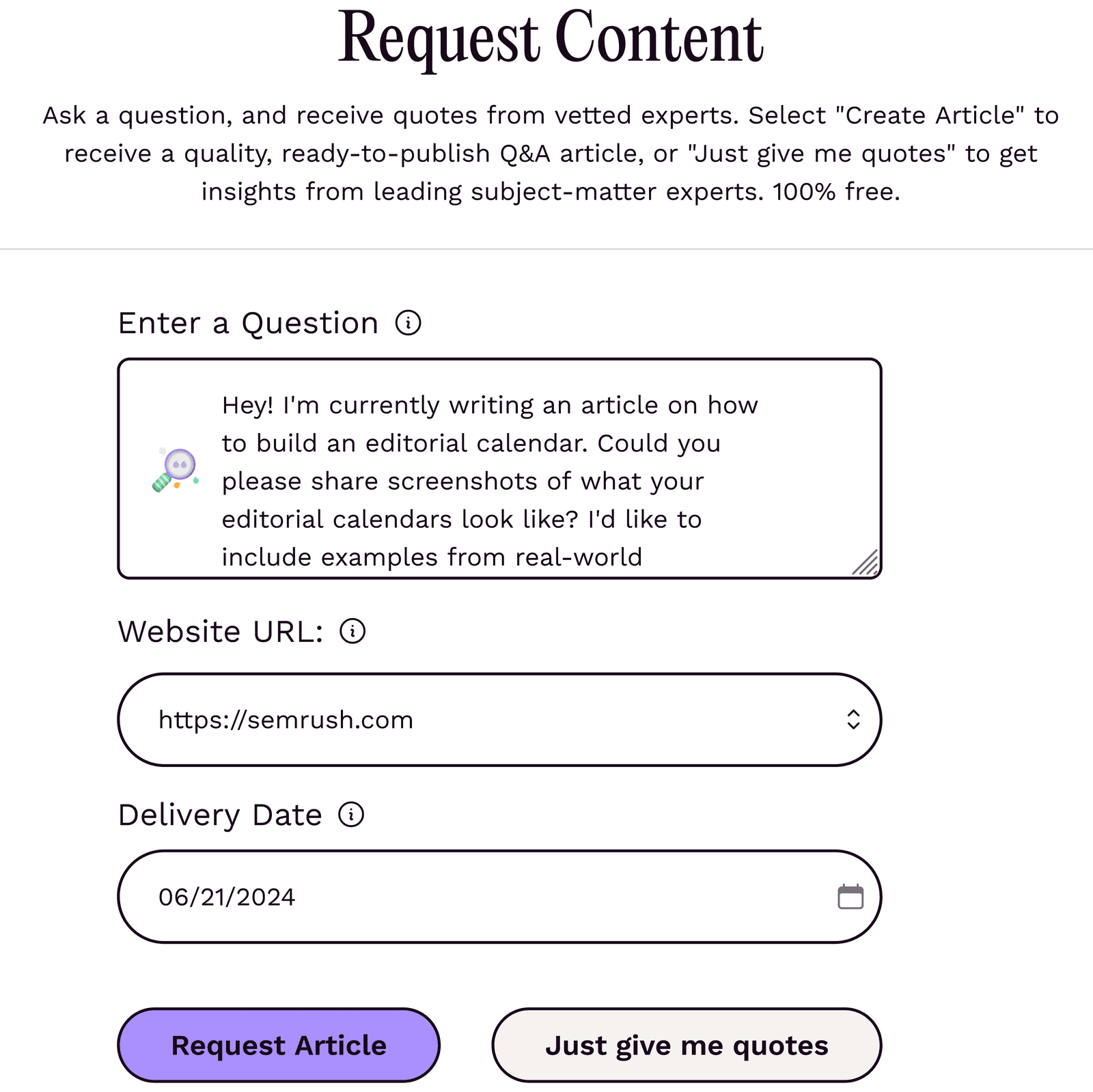
As a source, you can respond to up to three requests each month for free. Anything beyond that requires a paid plan.
Once you submit your quote, it’s reviewed by Featured’s editorial team.
They have systems in place that sort through answers and prioritize ones from subject matter experts who have firsthand experience and authority on the topic.
The editorial team then forwards the quotes to the publishers.
Featured also lets you keep a track of the quotes you submit through the platform. Helping you understand what percentage of your answers were featured.
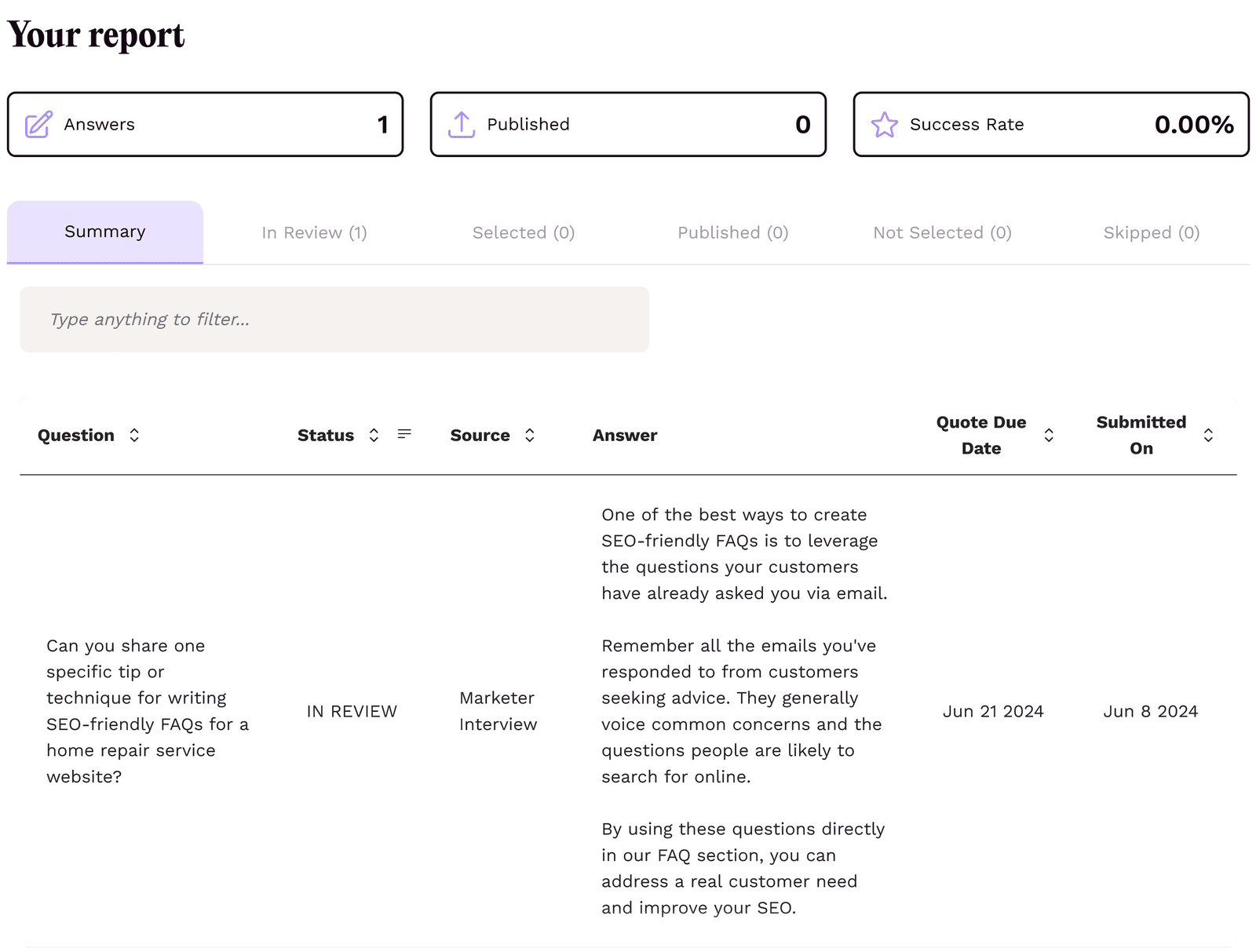
4. X
You can use X (formerly Twitter) to connect with journalists, writers, and media outlets seeking expert contributions.
Search hashtags like “#PRRequest,” “#JournoRequest,” or “#BloggerRequest” to find opportunities.
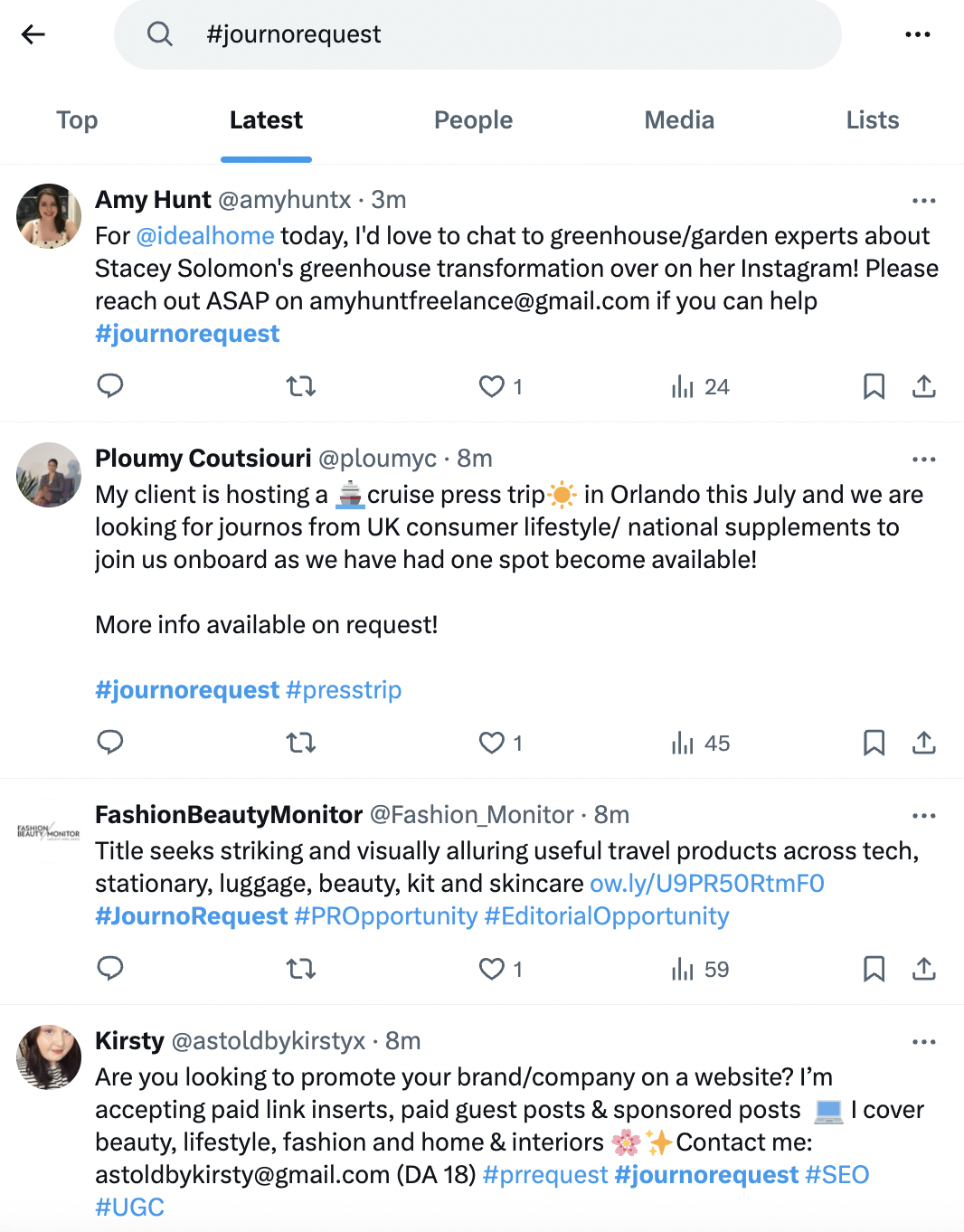
Go through the most recent requests and identify the best ones to respond to.
And visit the profiles of the people who posted requests to get information about the publication they represent (if not already mentioned in the post) and their job title.
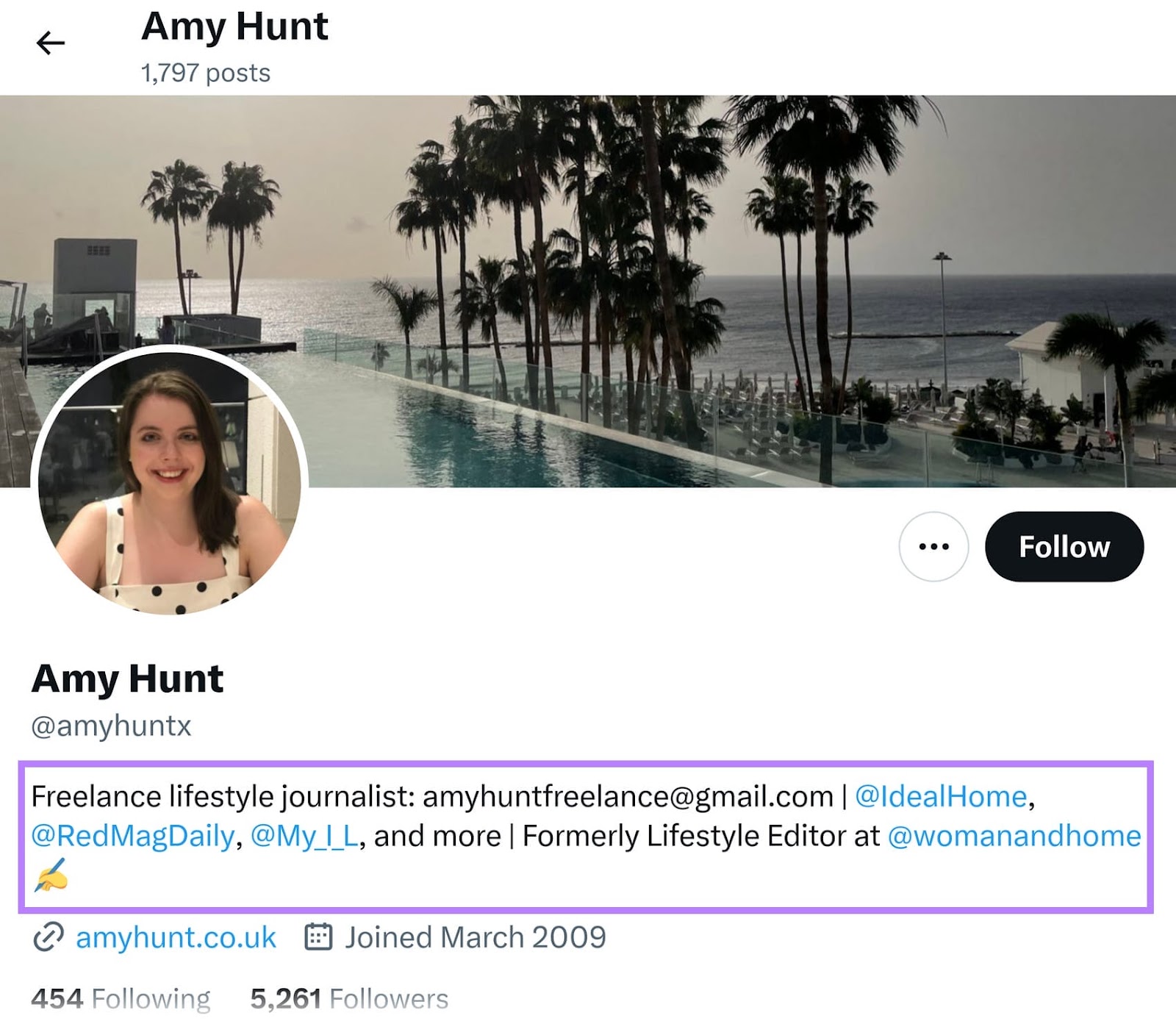
Once you’ve identified the best opportunities, comment on the post or reach out to them via direct message.
5. Forbes Councils
Forbes Councils are exclusive, invitation-only communities for senior executives and business owners across a variety of industries.
They have nine segmented specialty councils, including business development, coaches, finance, and human resources. And each has its own minimum revenue requirement.
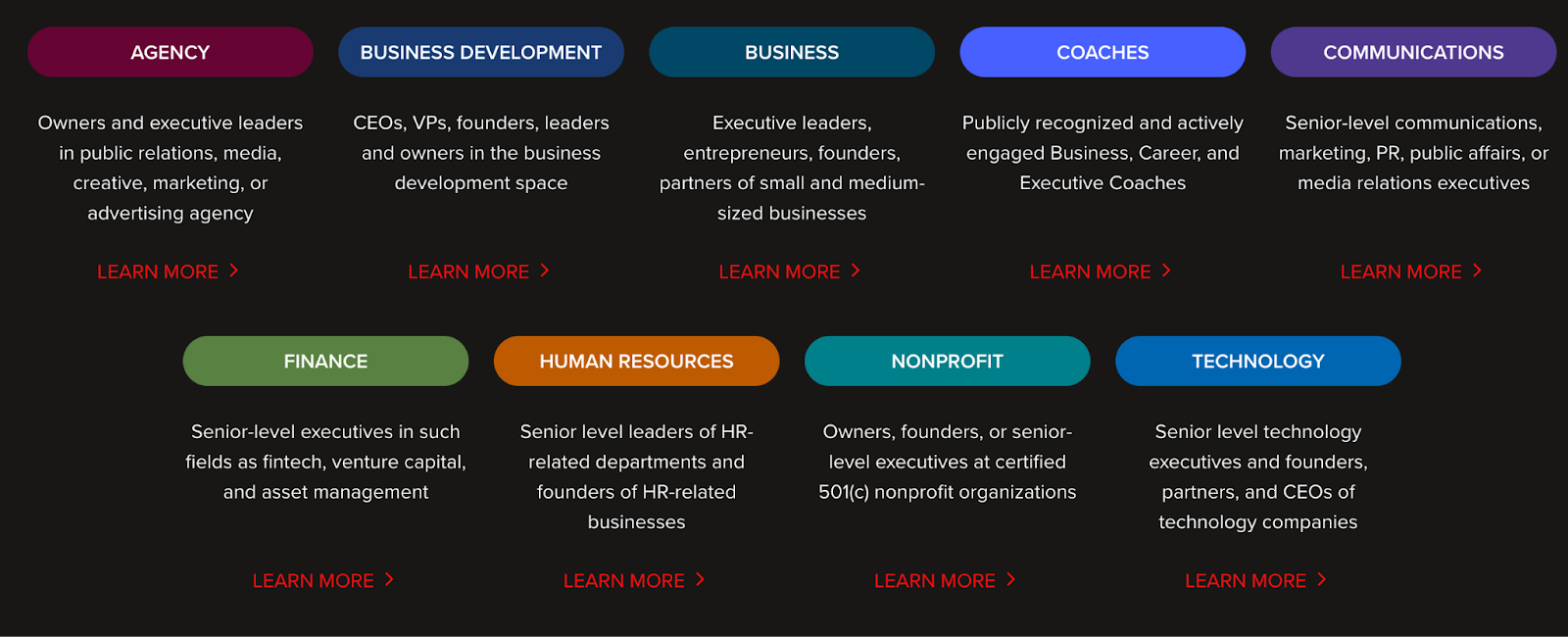
You can contribute expert insights, which will be featured on Forbes if accepted.
And you can submit bylined articles to be published on the site.
As a member you’ll also receive an author page with a link to your profile. Which can further help you enhance your online presence and build authority.
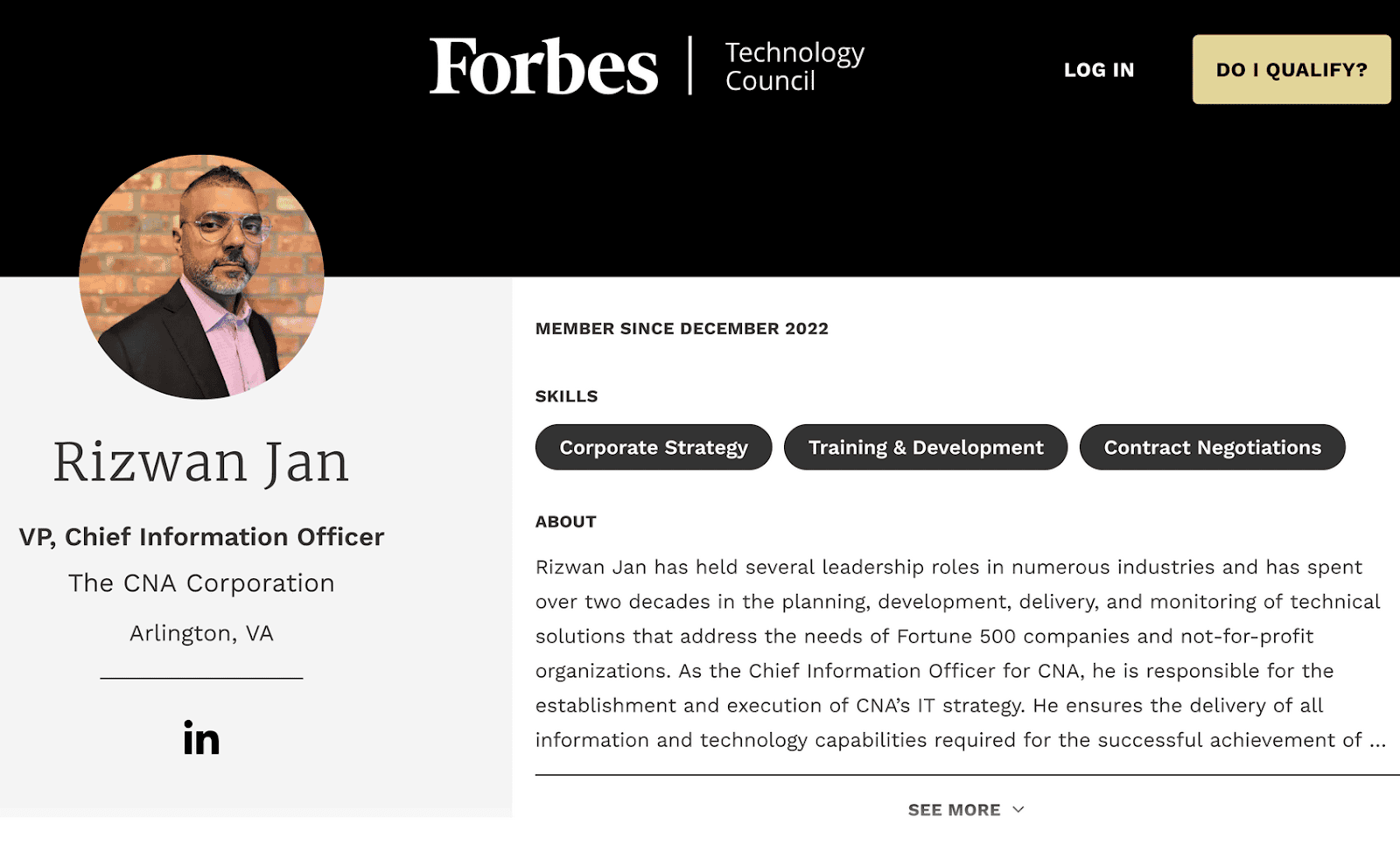
6. SourceBottle
SourceBottle is a pitching platform that’s focused heavily on Australian media. And features requests from well-known media outlets like Financial Review, ABC Australia, and The Guardian.
You can select which countries’ publications you want to receive contribution opportunities from. And choose the best time to receive daily emails (called “Drink Up” emails) with media opportunities that align with your expertise.
SourceBottle also lets you create your own expert profile, which will be included in their directory that’s accessible to journalists. Like this:
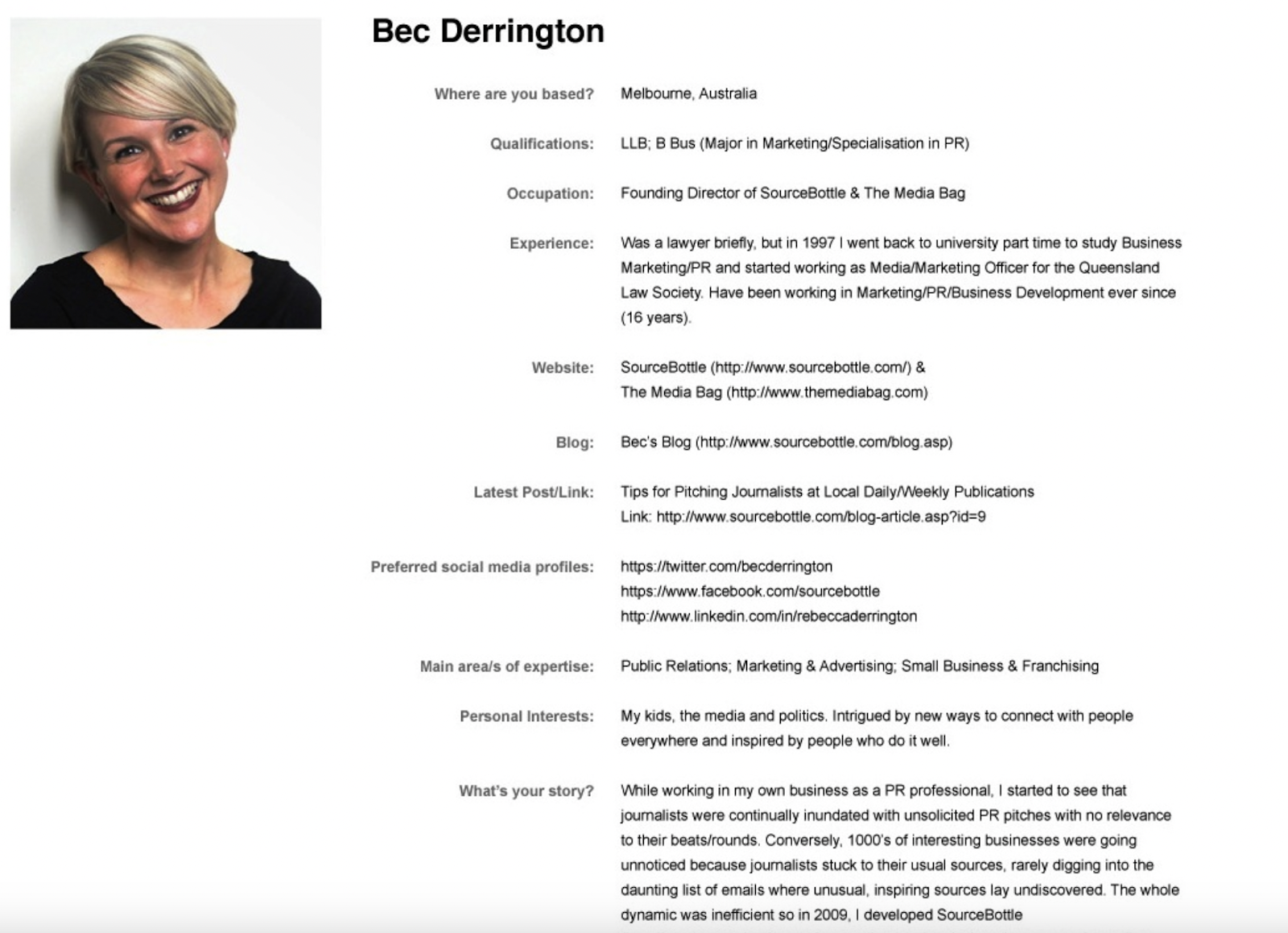
You can also browse available queries to contribute to directly from the platform.
These queries are categorized by topic. Like business and finance, technology, and property.
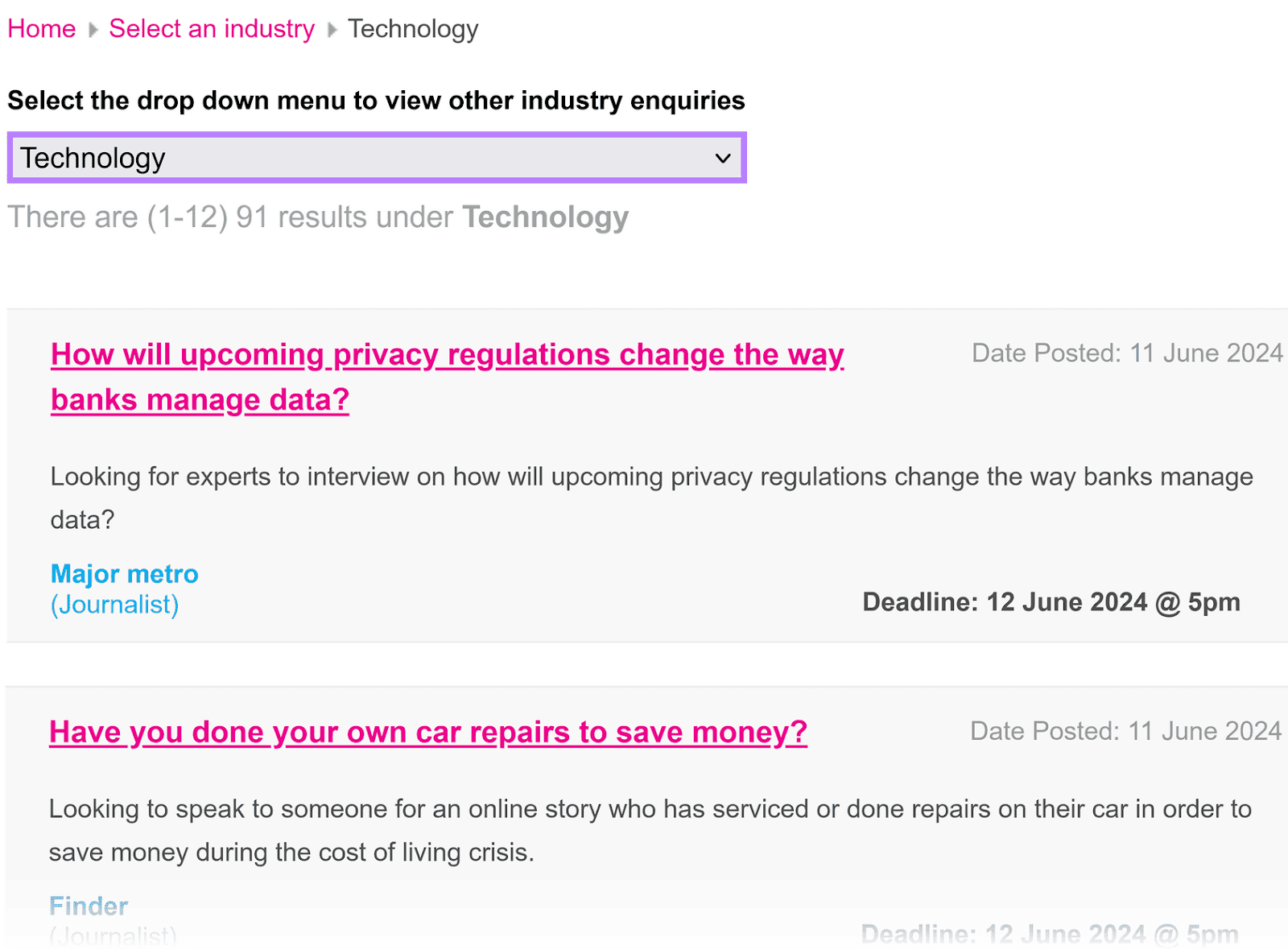
Once you’ve submitted your responses, you can track which inquiries you’ve responded to. And follow up if needed.
7. PressPlugs
PressPlugs is a platform used by some of the U.K.’s biggest media outlets. Like Metro, The Daily Mail, BBC News, and The Guardian.
PressPlugs gives you direct access to journalists. Meaning you can reach out directly and build relationships with them.
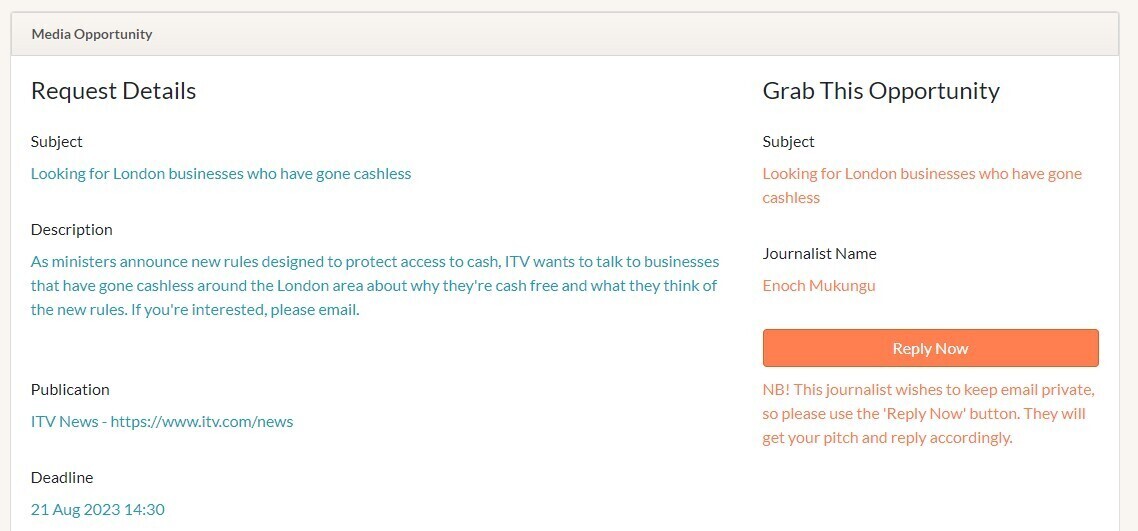
Once you sign up for the free trial, you’ll automatically start receiving email alerts. And you can check your dashboard to see available requests.
PressPlugs also lets you tailor the requests you see on the site or receive via email to better fit your area of expertise.
Serving as a subject matter expert through one of the HARO alternatives above isn’t the only way to get more links to your site.
Here are some other tools you can use to do link building:
8. Backlink Gap
Backlink Gap lets you compare your backlink profile with those of up to four competing websites. And identify prospects for your link-building campaign.
By default, the tool shows a list of domains that link to your competitors but not to you. Along with additional information like Authority Score (Semrush’s metric to measure a domain’s overall authority and SEO performance), monthly website visits, and more.
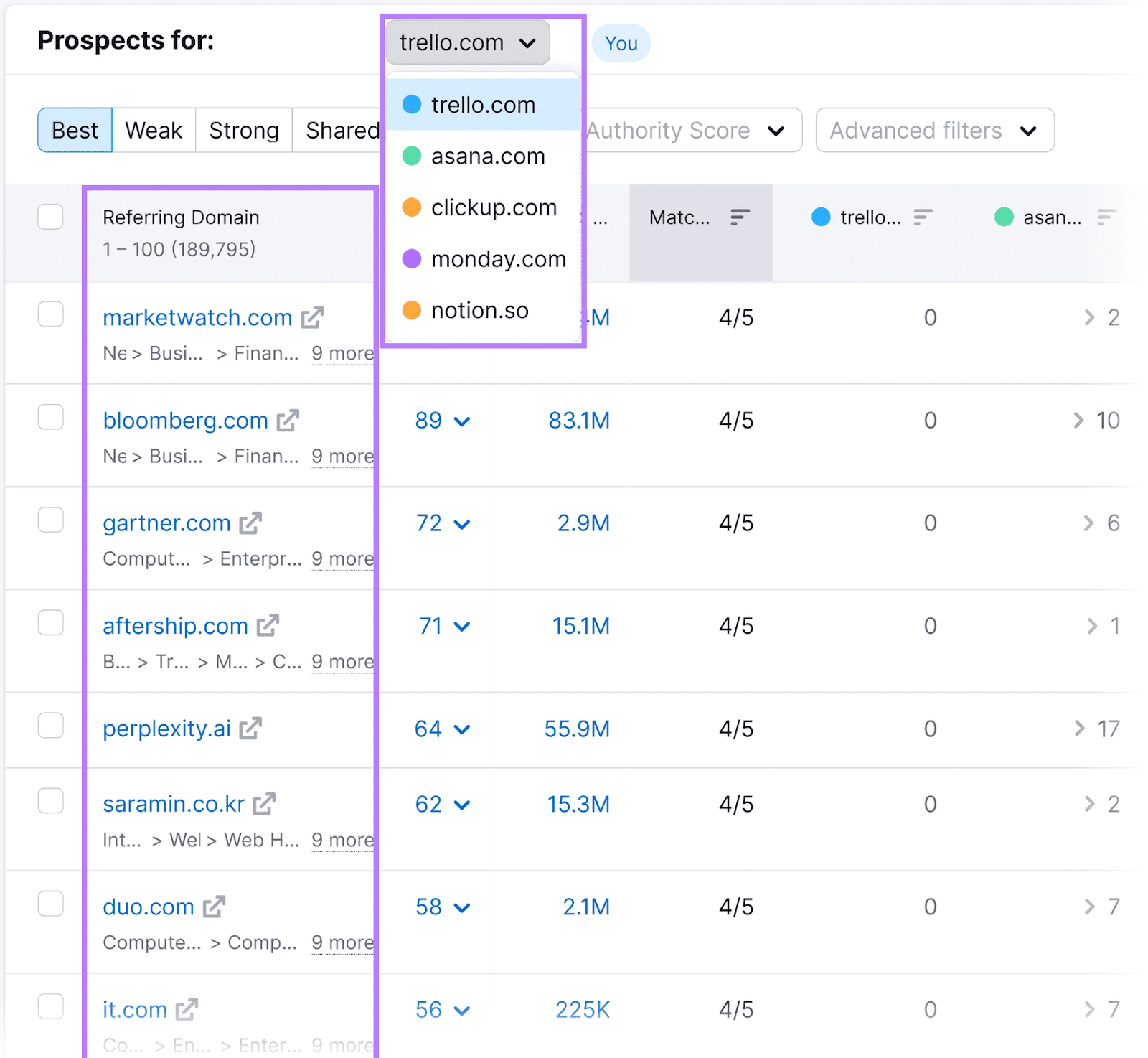
If a domain with a high Authority Score links to one or more of your competitors’ websites but not yours, you can reach out to that domain to request a link. Which is easiest if you have a piece of relevant, valuable content to share.
You can also filter out low-quality domains using the “Authority Score” filter. Which is useful because links from them aren’t as beneficial as those from higher-authority sites are.
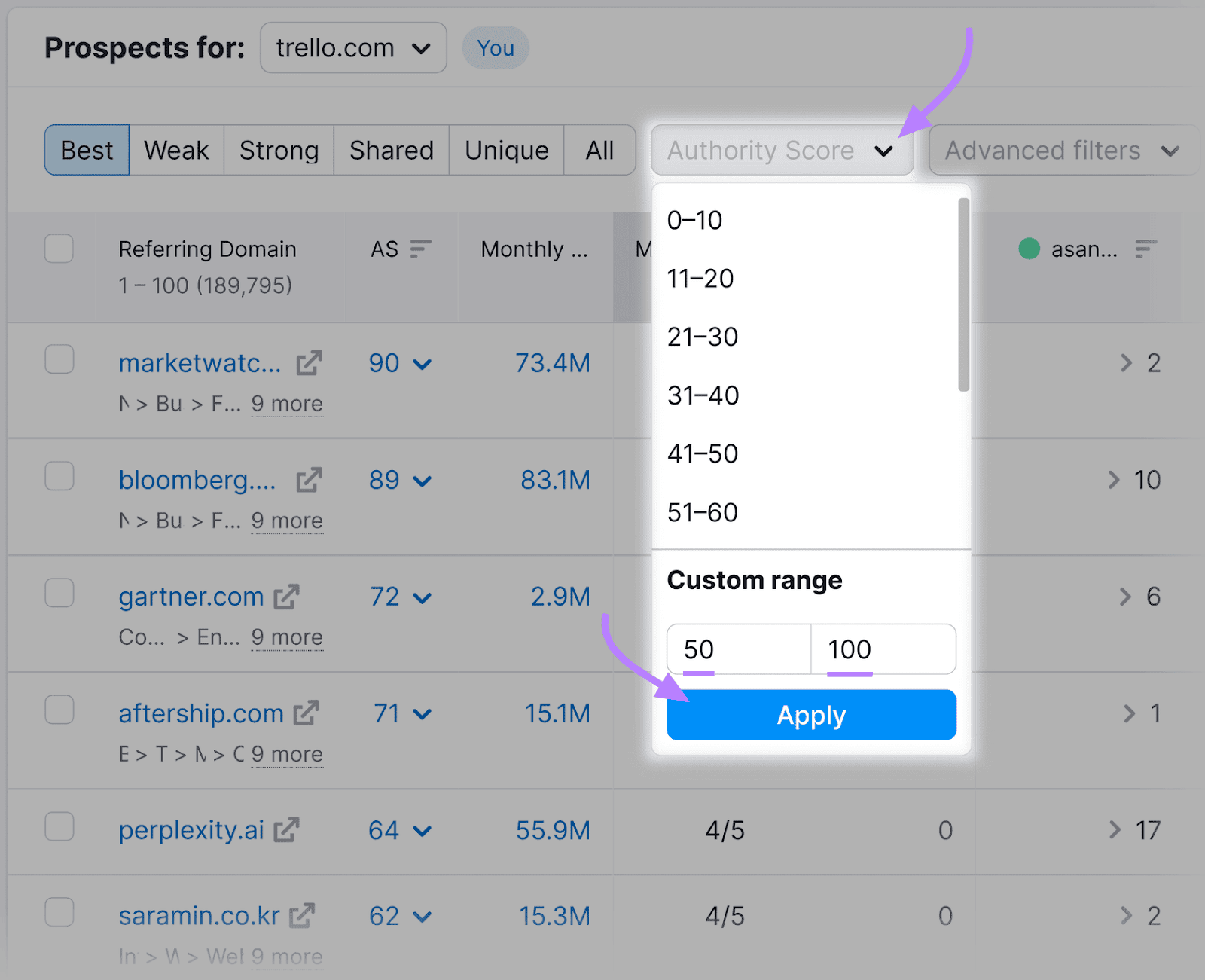
9. Backlink Analytics
Backlink Analytics offers an in-depth look at a competitor’s backlink profile. So you can reach out to the domains that link to them to request your own link.
You can use this tool to analyze:
- Backlink sources: All external links that lead to the analyzed domain
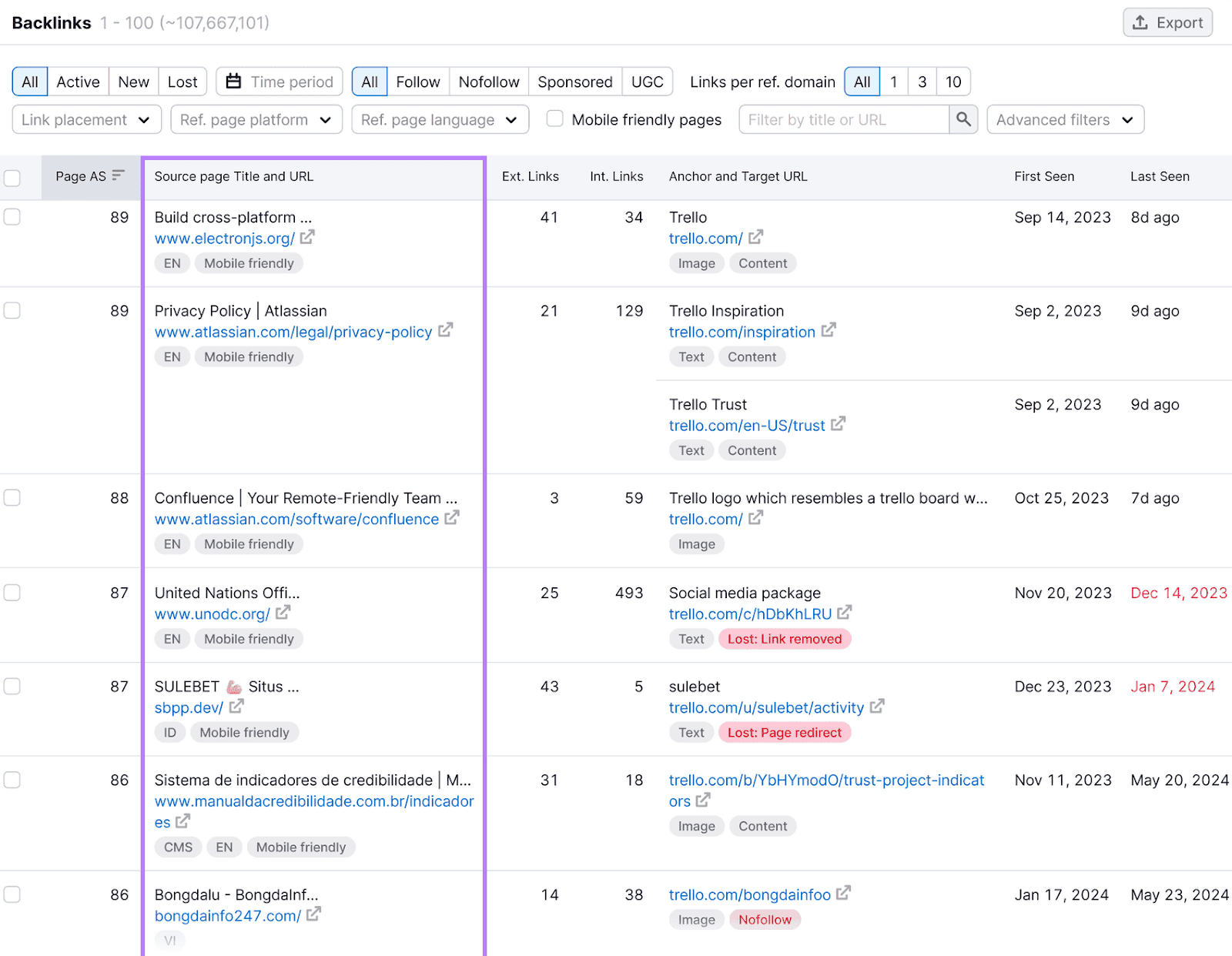
- Referring domains: The domains that link to the analyzed domain
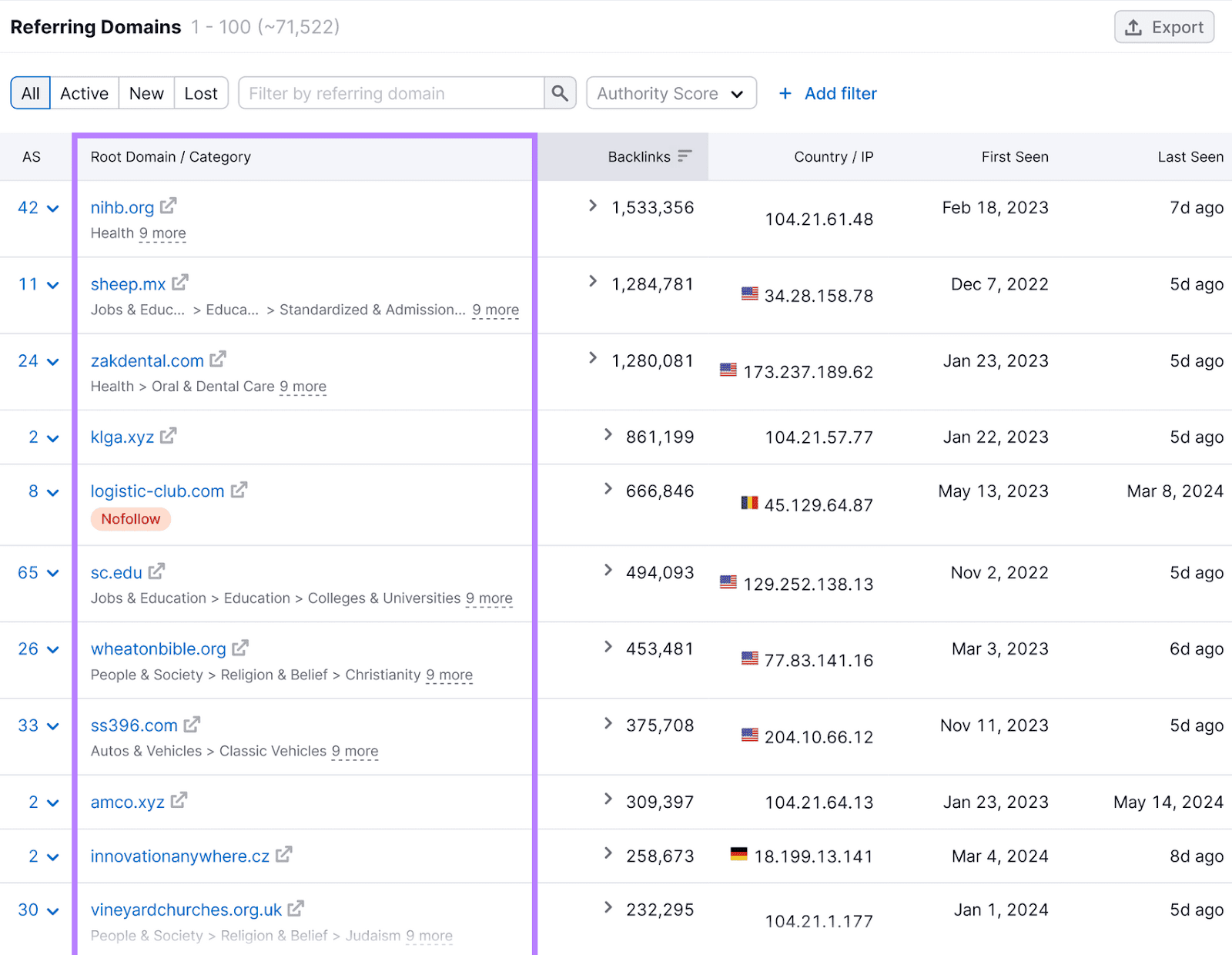
- Link details: Follow vs. nofollow, link placement, link type, etc.
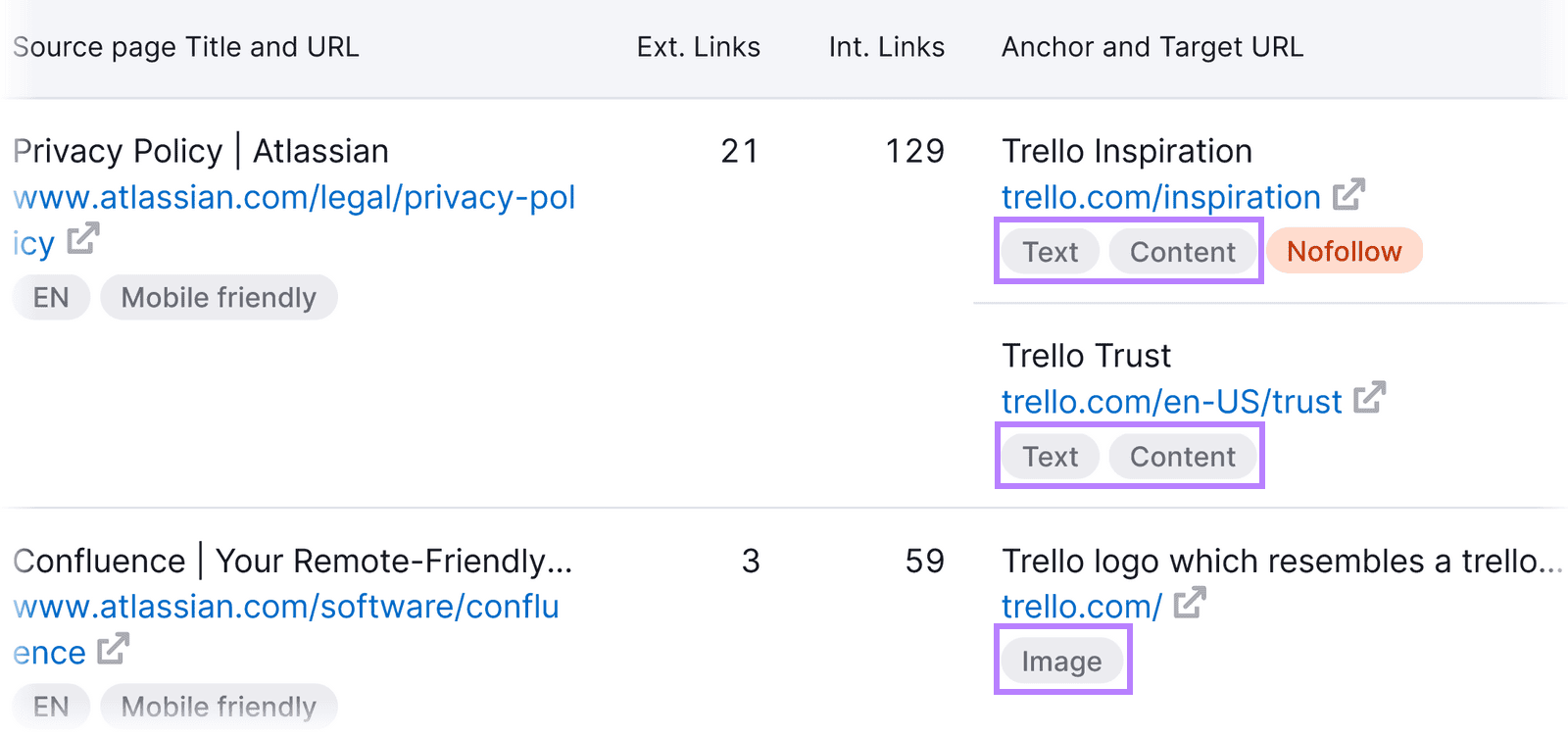
10. Link Building Tool
The Link Building Tool offers a streamlined interface to plan, launch, and manage a link-building campaign.
To get started, enter your domain and click “Create project.”
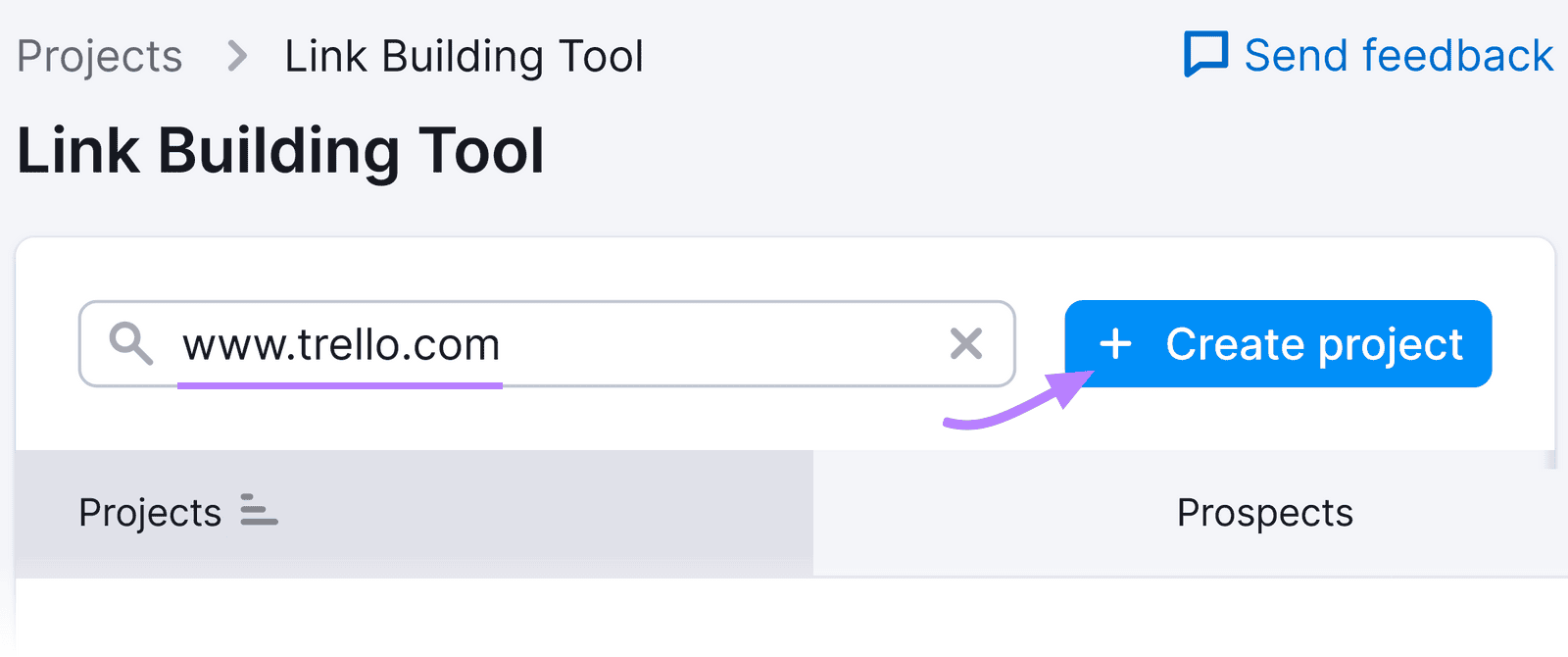
Next, enter the keywords you want to rank for and your top competitors.

Once the tool is ready, navigate to the “Prospects” tab.
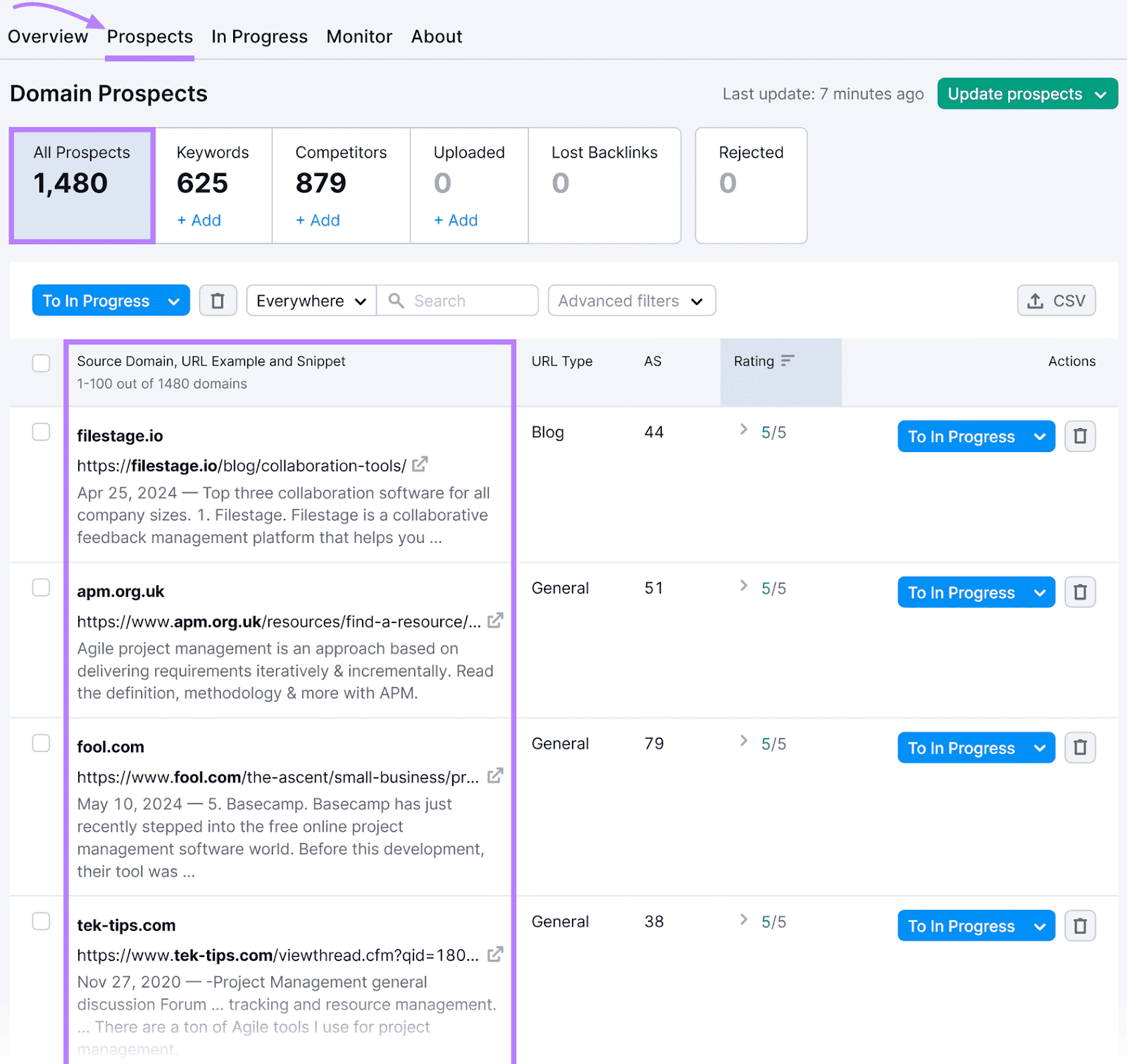
You can then evaluate those prospects based on multiple factors like Authority Score and URL type.
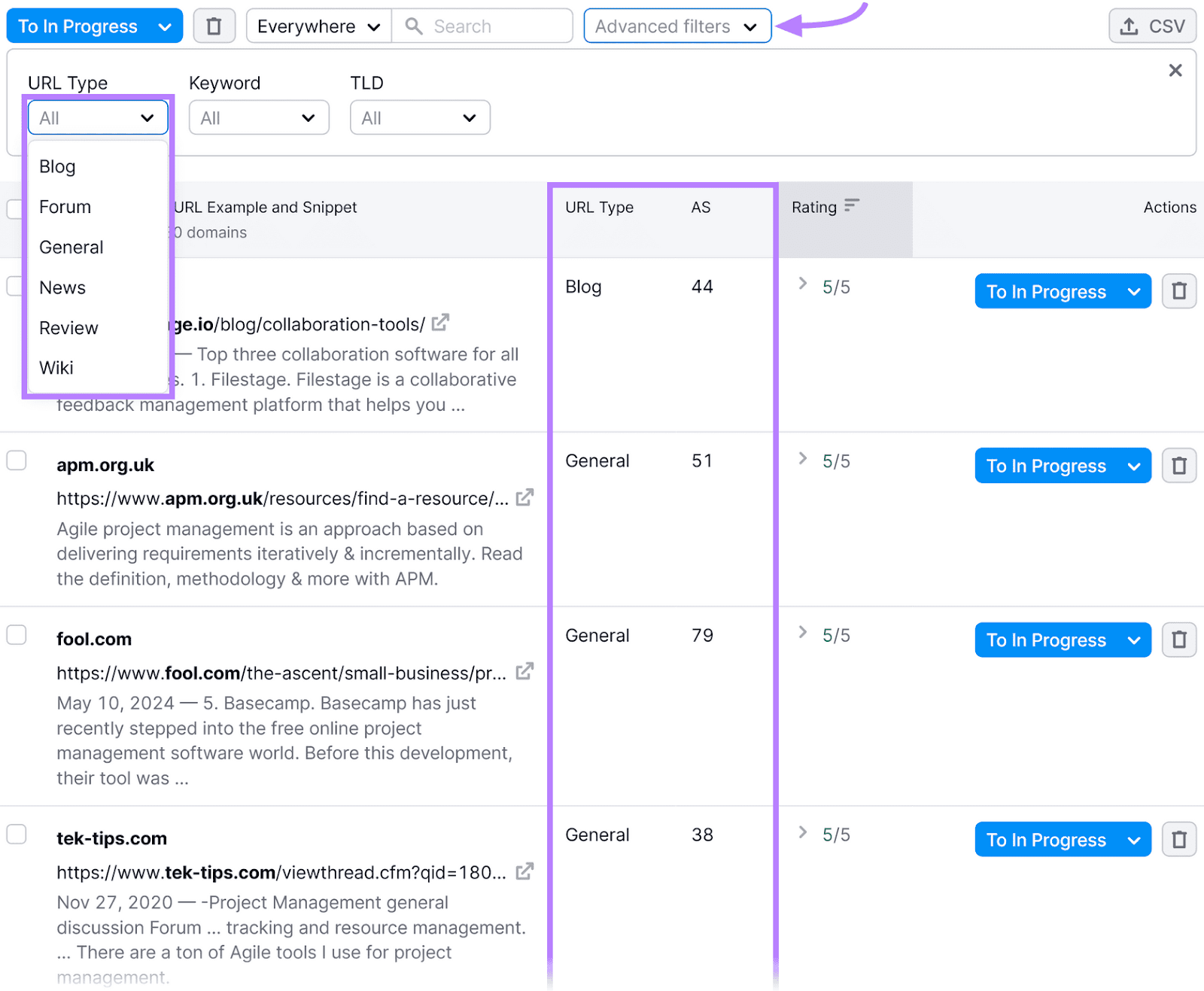
And reach out to them directly from the tool.
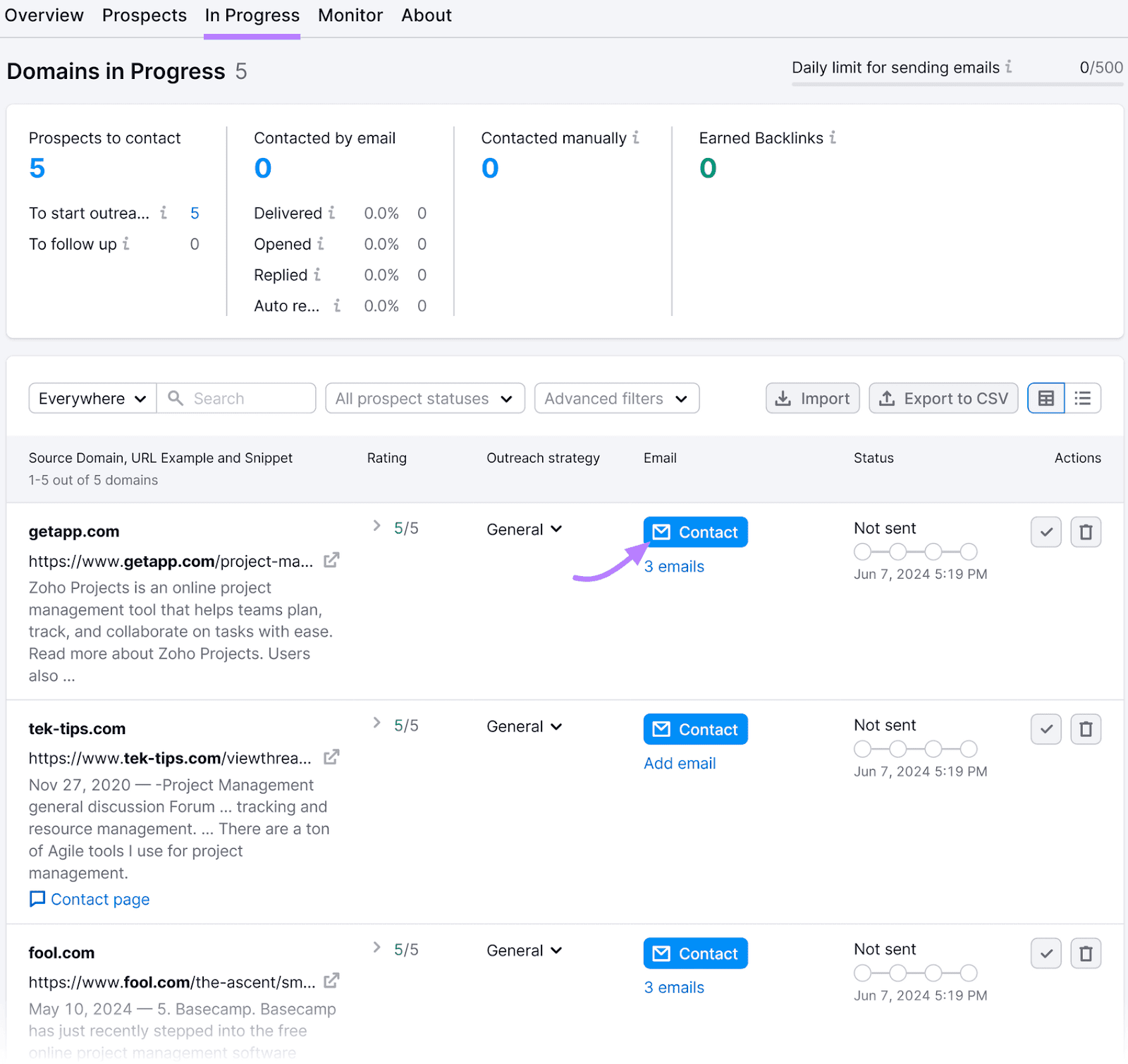
You can also keep a track of your outreach directly from the Link Building Tool. To see how your campaign is progressing.

11. Media Monitoring App
The Media Monitoring App helps you identify unlinked brand mentions (places where your brand was mentioned without linking to your website). And turn them into backlinks.
If a publication has already mentioned your brand without giving you a link, there’s a possibility they’ll link to your website if you simply ask.
It lets you track mentions across blogs, message boards, news sites, and even video platforms.
Along with sentiment for each mention.
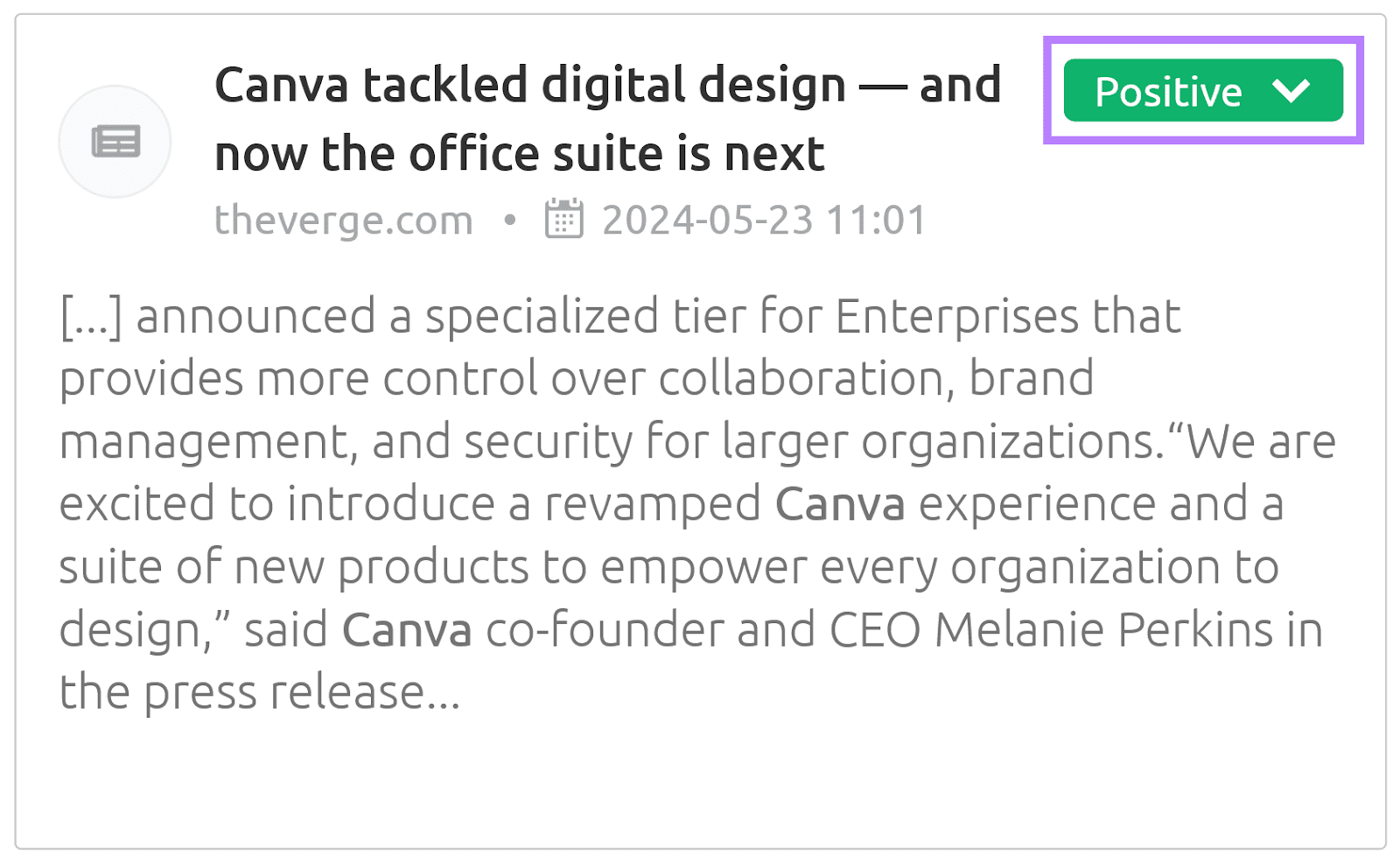
Consider reaching out to publications that spoke about you favorably. Because they’ll likely agree to add a link to your website.
Start Your Link-Building Campaign
To increase the chances of building high-quality backlinks, focus on quality over quantity. It’s better to submit a few high-quality pitches each week rather than 100 low-quality ones.
And use Semrush’s tools to plan, execute, and manage your efforts.
Start your free trial today!
Source link : Semrush.com



